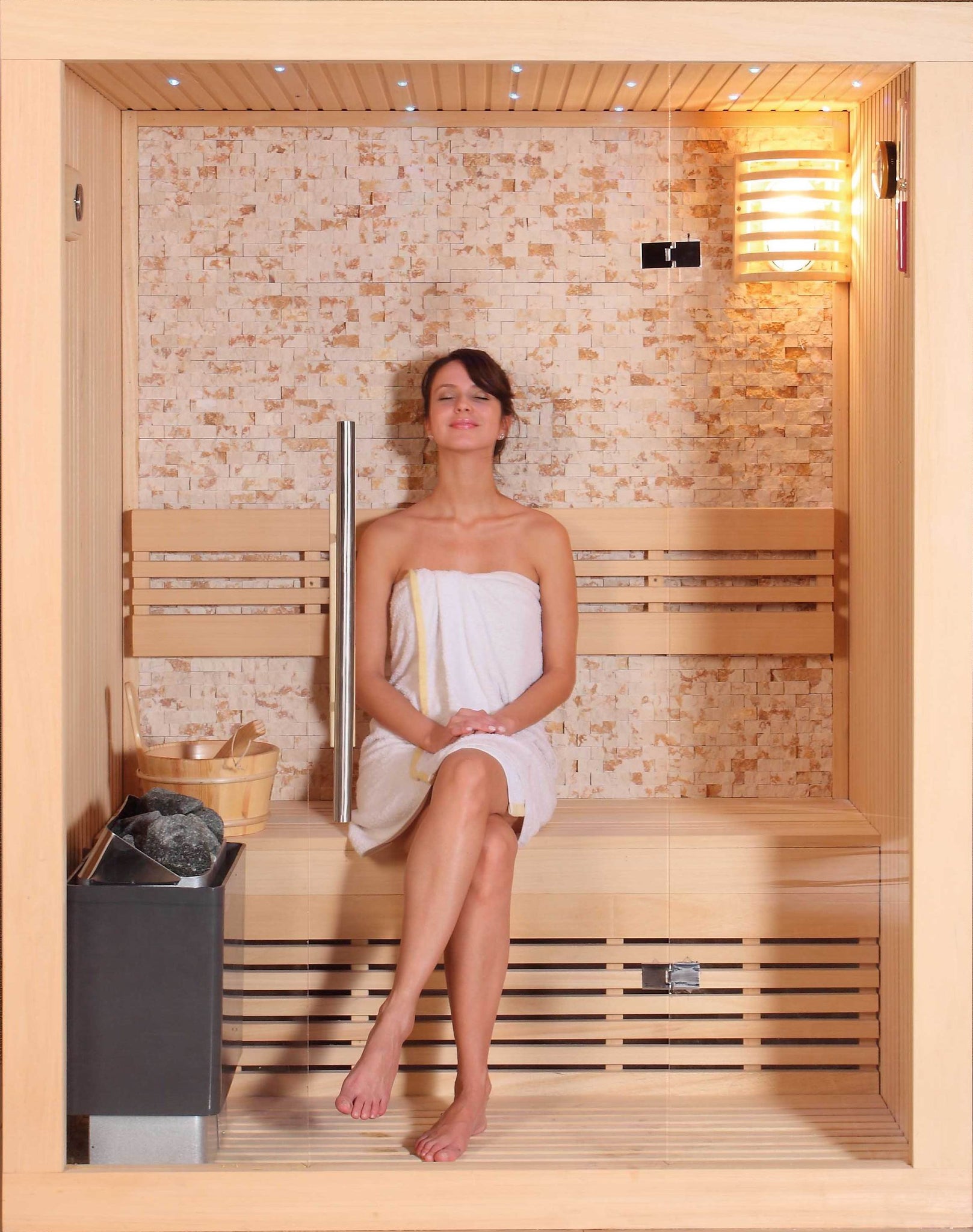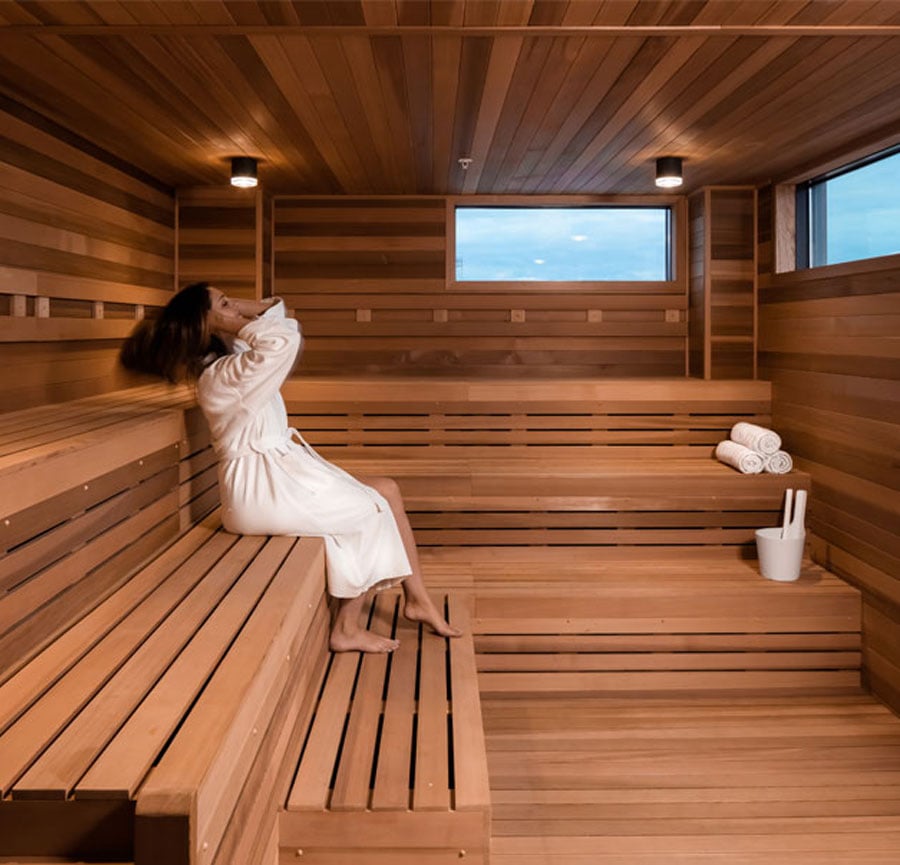Traditional Sauna Fundamentals Explained
Traditional Sauna Fundamentals Explained
Blog Article
Rumored Buzz on Traditional Sauna
Table of ContentsIndicators on Traditional Sauna You Need To KnowTraditional Sauna Things To Know Before You BuyTraditional Sauna Fundamentals ExplainedAn Unbiased View of Traditional Sauna
Many of the weight lost in a sauna is water loss and is re-gained upon rehydrating. Without a question sauna can be a crucial component of a healthy weight loss program. To look at the differences between conventional and IR saunas, I will separate these into proven, academic, and fabricated distinctions.Hence, the hottest point in the saunawhich is at the ceiling directly above the sauna heateris commonly between 185 and 190 F. Traditional Sauna. Claims that a standard sauna surpasses 200 F is simply not true and not suitable for electrical saunas offered in the United States. The temperature for a far-infrared sauna is generally established between 120 and 140 F; however, unlike the standard sauna, the objective in and IR room is not to achieve a heat
As a result of this, the temperature difference is virtually irrelevant, given that excessive sweating leads to both sauna types, however the technique of heating the body is various. In an IR sauna the bather will really feel warm and will sweat a lot, but at a lot lower temperature levels. Therefore, if the objective is to spend longer amount of times in the sauna, the IR sauna is a great choice.

Examine This Report about Traditional Sauna
When the heat is attained, the components cycle on and off to maintain the high temperature. A lot of standard sauna customers enjoy pouring water over the rocks to produce heavy steam to increase sauna moisture degrees. The benefits of pouring water over the rocks consist of: making the area more comfortable, dampening the nasal flows, and permitting the usage of aromatherapy by blending crucial oils with the water.
In a far-infrared sauna, the warm front permeate the body to successfully warm the body and elevate the body core temperature level. To accomplish this boosted temperature level, Far-infrared emitters develop infrared power which is close to the very same wavelength as that which the body normally emitsoften my website described as the "Essential Array" of 7 to 14 microns), so the power is well gotten by the body.
When the power goes into the body, it triggers the body temperature to enhance and eventually causes sweat. In an infrared sauna it is essential for the emitters/heaters to remain on nearly continuously. Considering that there is no mass of rocks to maintain warmth, the sauna will cool down if the emitters shut down.
As pointed out above, the sauna bather in an infrared area wishes to position himself in front of running emitters to obtain maximum gain from the warm. The heating time for the 2 areas can be very various, depending upon how the areas are made use of. For a traditional sauna, a bather needs to enable 30-40 minutes for the area to accomplish a desired temperature level and to appropriately pre-heat the rocks.
The Traditional Sauna Statements
A well built sauna will typically accomplish a temperature level of 150-160 F in concerning 30-40 mins. For hotter temperatures, the room may require to warm for a longer additional resources period.
To some, 15 minutes was "thrown away" while the infrared energy heated the wood panels rather than heating up a body, while others locate a pre-heated area to be more comfortable and think a raised starting temperature level is required to begin perspiring. The size of advised use for every area is approximately the same (10-15 minutes per session); nevertheless, as a result of the reduced air temperature levels and the ability to feel the impacts of infrared warmth quicker than a typical sauna, it is not uncommon for an individual to spend an overall of 20-30 mins in an infrared sauna.
Typical saunas tend to be larger (hence make use of more electricity) than infrared saunas, although typical saunas are certainly available in one and two person dimensions also. For a two-person typical sauna, 5x6 or 5x7 size is most popular. The top bench can comfortably seat two or 3 individuals and is additionally long enough to relax during the sauna session.


The average price per kWH of electrical energy in the U.S. is around $0.11, so a 4.5 kW heating system will set you back roughly $.50 to compete one hour, if the heater runs continually for one hour. Normally a sauna heater will compete 75% of the first hour and 50% of subsequent hours on since the components cycle once the set temperature level is achieved.
Examine This Report about Traditional Sauna
A 2 individual far-infrared space is typically literally smaller than a standard sauna, typically concerning 4' x 4' or smaller sized. The IR furnace is commonly 1.5-1.7 kW using a 120 volt 15 amp plug-in service. Given that the room can be why not try this out made use of quicker than a sauna space, we will certainly presume the space is made use of for to of an hour including warmth up time.
There is a rarely gone over distinction in the social experience in between the 2 areas. While our society has lost a few of the social benefit of the standard sauna experience, it can be extremely socially fulfilling. From family time in the sauna, to heart-felt discussions with significant others, to sauna partiesthe traditional sauna experience can bring about intimate interacting socially.
Many greater end infrared rooms consist of tinted light therapy, noise systems and full-glass fronts.
Report this page